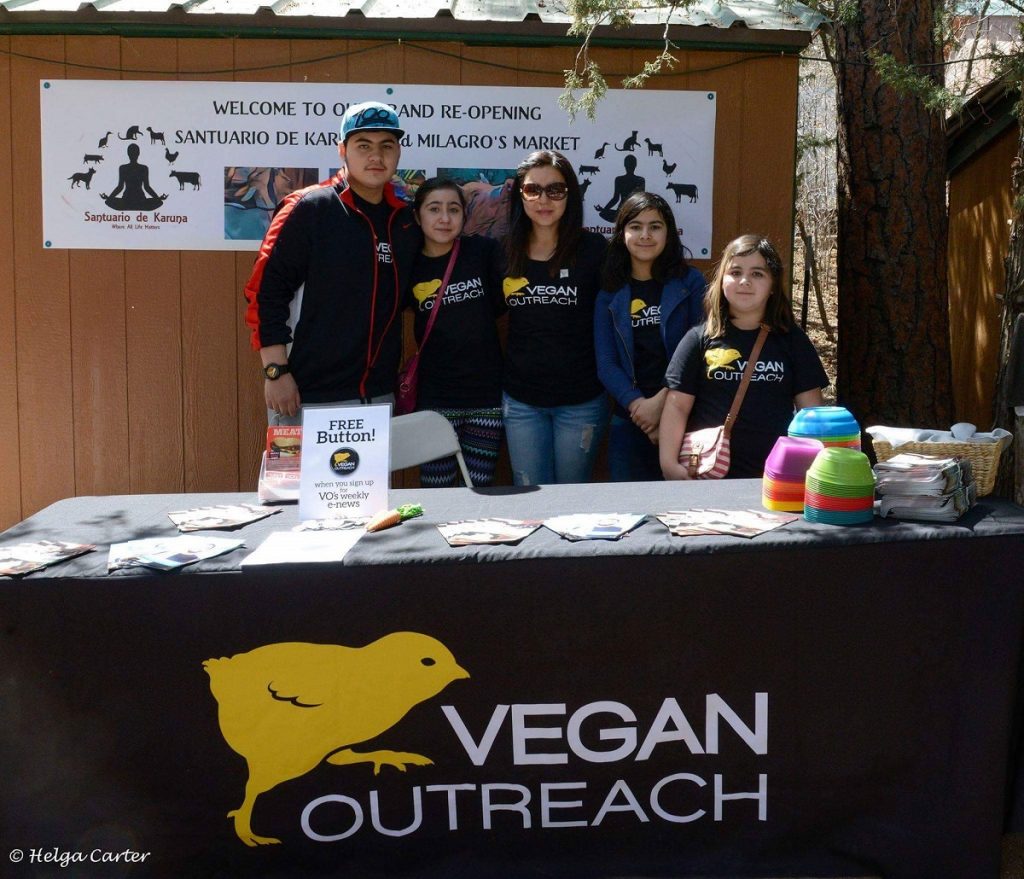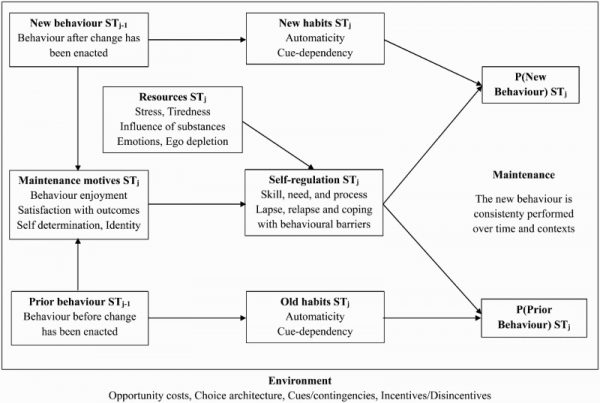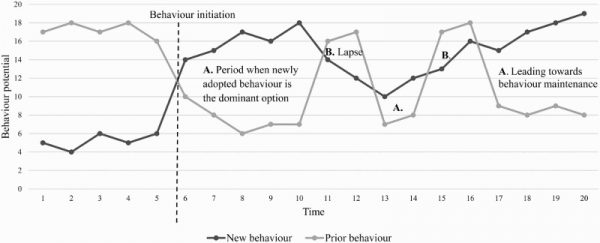by Jack Norris, RD
Vegan Diets—Health Benefits
A vegan diet can provide many health benefits. Vegans have:
- 3/4–1/2 lower rates of high blood pressure (1, 2)
- 2/3 lower risk of type-2 diabetes (3)
- 15–20% lower risk of cancer (4, 5)
- Significantly lower cholesterol levels (6)
Even though there are numerous benefits, in order to thrive, vegans should be aware of the nutrition issues below.
Calories, Protein, and Fat
It’s important to include some high-calorie, high-protein foods in order to feel satisfied.
Simply removing animal products from a typical American diet is going to leave you with mostly low-calorie foods such as salads, vegetables, and fruit. Eating only these foods could quickly leave you feeling hungry and weak, and thinking a vegan diet is a real challenge.
While severe protein deficiency is nothing to worry about, not eating some high-protein plant foods could leave you craving animal products or feeling fatigued—see Story from a Once-Failing, Now-Thriving Vegan.
Legumes—beans, peanuts, peas, lentils, and soy—seitan, and quinoa are the best sources of protein for vegans. Include a few servings of these foods each day—maybe even each meal.
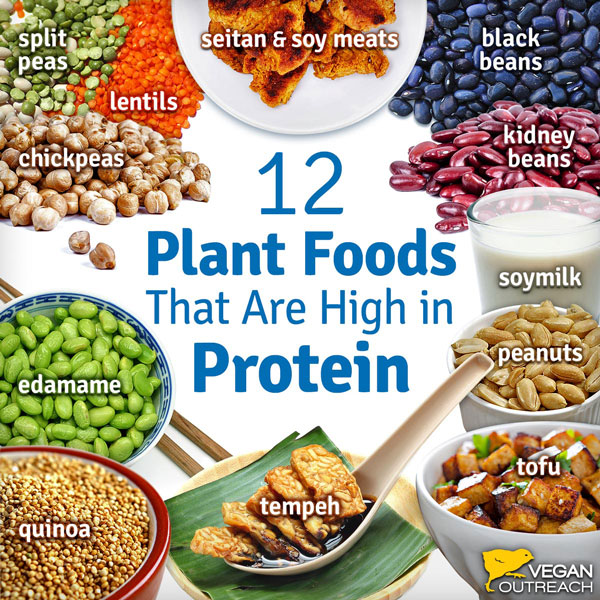
People tend to think of animal products, and especially meat, as “protein,” but many are 50% fat. A very low-fat, plant-based diet might improve someone’s health in the short term, especially if they have high cholesterol, but it might not be ideal for longer periods. If you’re avoiding all added fats and you start to crave animal products, it might be time to increase the plant fats.
In fact, research has consistently shown that eating nuts—which are high in fat—improves markers for heart disease (7).
Although the research is still preliminary, it appears that some people don’t have the genetics to do well on a high carbohydrate diet (8). For such people, an eco-Atkins diet, high in plant proteins such as soy meats, legumes, and seitan, might be a better choice (9).
Finally, if you find yourself craving animal products, it could be because you have a strong preference for the taste of glutamate, also known as umami. Plant foods high in umami are ripe tomatoes, tamari, miso, sauerkraut, dried sea vegetables, marmite, nutritional yeast, olives, balsamic vinegar, and mushrooms. Roasting, caramelizing, browning, and grilling increase umami by freeing glutamate from proteins (10).
Don’t Overdo the Oxalate
Some plant foods are high in oxalate and spinach is extremely high. For most vegans, oxalate won’t be a problem, but if you decide to start juicing or blending your greens, make sure you don’t consistently use large amounts of the high oxalate greens—spinach, swiss chard, and beet greens—doing so can sometimes result in a kidney stone. See Oxalate for more info.
Low Cholesterol
In rare cases, some vegans might not get enough fat or calories to produce adequate amounts of steroid hormones, which are made from cholesterol.
Two studies have shown vegans to have sex hormones on par with meat eaters (11, 12), but one report showed vegan women to have lower levels of estrogen (13).
A few anecdotal reports provide some evidence that low cholesterol might be a problem for some vegans—see Bonzai Aphrodite’s story of regaining her health as a vegan, Facing Failing Health As A Vegan. In such cases, increasing saturated fat, such as by adding some coconut oil, could increase a depressed libido or resume menstruation.
Vitamins and Minerals: For the Long Haul
Although a vitamin or mineral deficiency is very unlikely to occur in only a few weeks or months as a vegan, there are some nutrients you need to pay attention to if you want to thrive over the long term.
Daily Needs
We provide the precise requirements and common sources for each nutrient below in our article, Daily Needs.
Vitamin B12
Vitamin B12 in vegan diets has been a source of controversy and myths (14). Although it rarely happens quickly, if you don’t get a reliable source of vitamin B12 through fortified foods or supplements, the chances are high that you will eventually find your health suffering.
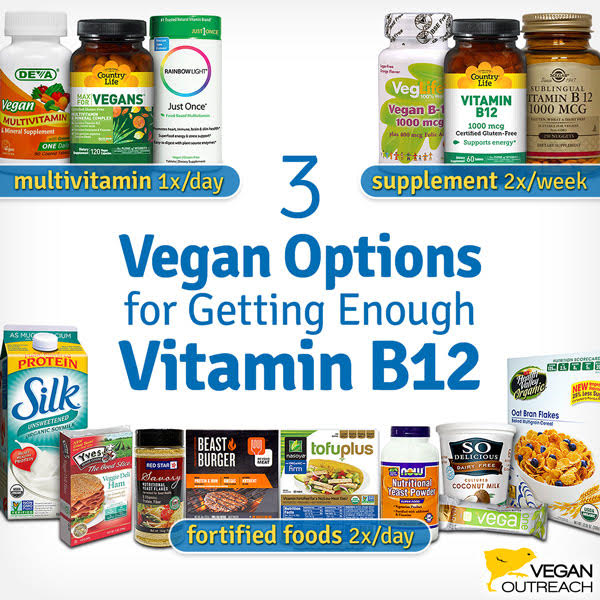
Calcium
The need for calcium on vegan diets has also been surrounded by misleading claims with many vegan advocates saying that animal protein, including milk, is the main cause of osteoporosis in Western countries. Following this logic, it would make sense that vegans don’t need to worry about osteoporosis since we don’t eat animal protein.
The research actually shows that vegans, like nonvegans, should try to meet the same calcium recommendations as the greater population. Vegan diets tend to contain much less calcium than other diets, so we must make an effort to include good sources on a daily basis.
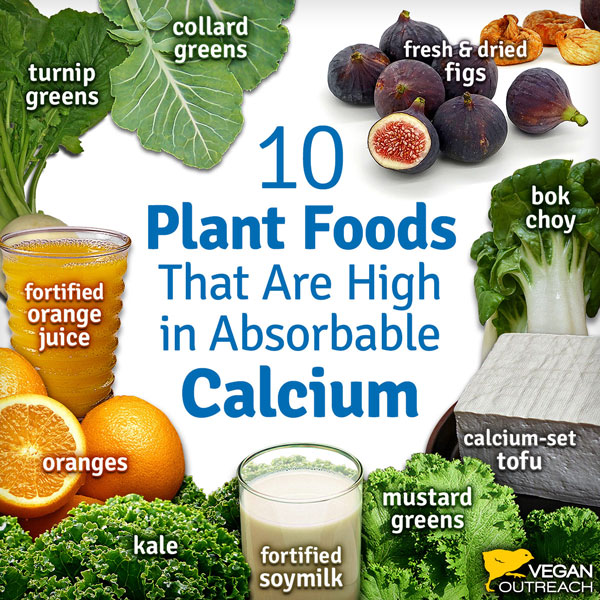
Vitamin D
More often than not, vegans who come to me with severe fatigue are suffering from vitamin D deficiency. This isn’t just a vegan problem as many people develop vitamin D deficiency, partially as a result of avoiding the sun. But vegans are at a slight disadvantage, on average, because we get less vitamin D in our diets. Make sure that you have a reliable source of vitamin D.
Iron
Iron is found in a wide range of plant foods and vegans tend to have iron intakes comparable to meat-eaters.
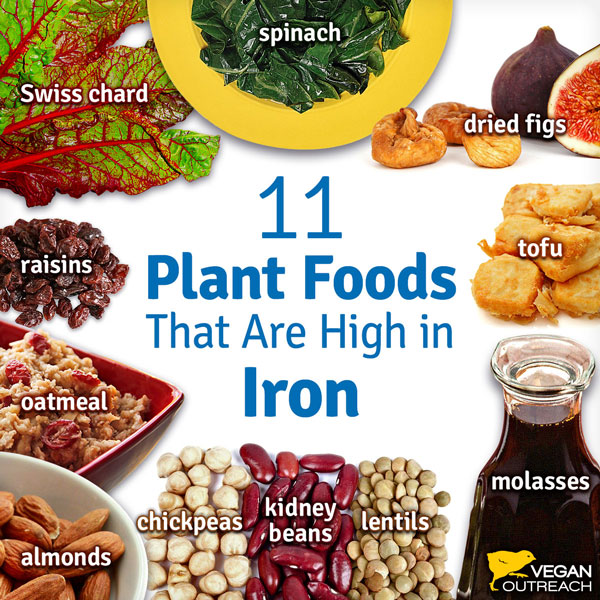
However, plant iron isn’t as easily absorbed as iron from meat and a small percentage of women develop iron-deficiency anemia after becoming vegetarian.
If you think you’re at risk: Make sure to include a good source of vitamin C at meals—it binds with iron creating a more easily absorbed complex. Avoid coffee and tea at meals as they decrease iron absorption.
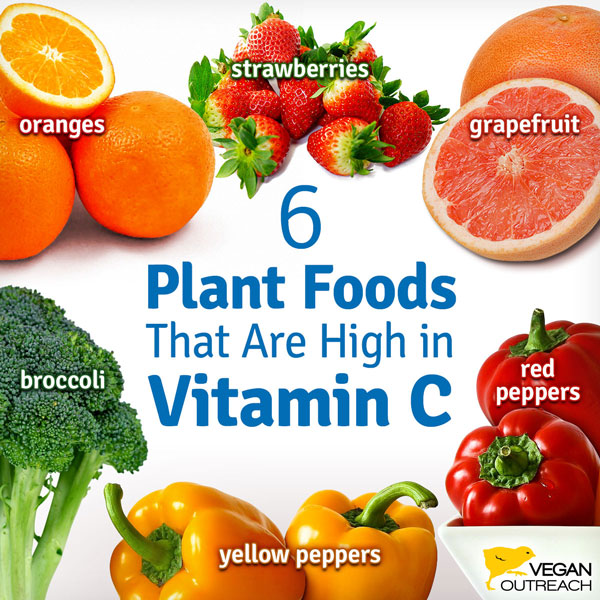
Iodine
Iodine is important for thyroid health, but it’s a nutrient that most vegans rarely think about. A 2011 study showed that some vegans don’t get enough. Especially if you eat soy, you should make sure you have a source of iodine—either from seaweed, a supplement, or iodized salt.
Omega-3s
DHA is an omega-3 fatty acid that is important for cognition. A short time on a vegan diet is not likely to cause any sort of deficiency, but long-term vegans should make sure they’re getting enough omega-3s. Walnuts, canola oil, flaxseeds, or a DHA supplement are the most common ways to obtain omega-3s.
Vitamin A
There are many sources of vitamin A for vegans—especially orange vegetables—but you shouldn’t leave getting enough to chance. See your options in the picture below and eat one or two sources every day.
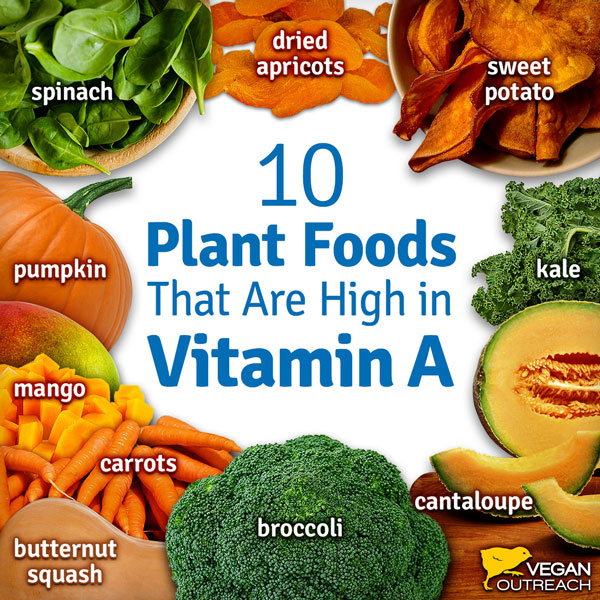
Zinc
An average vegan diet will meet or come close to the RDA for zinc, but some people might fall a bit short. Symptoms of zinc deficiency include catching frequent colds or developing cracks at the corners of your mouth. Supplement with 50–100% of the RDA if you suspect a deficiency.
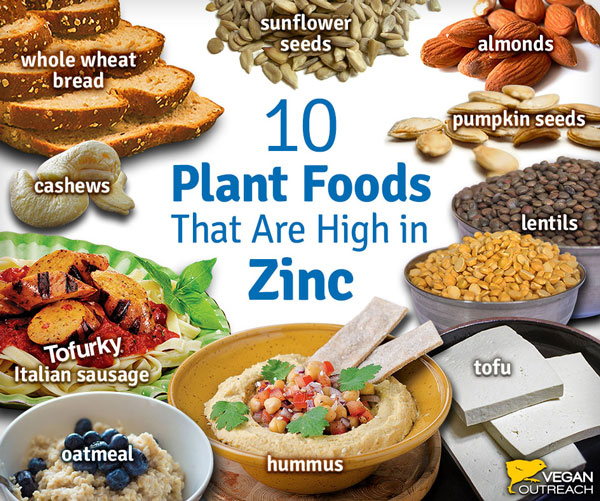
Vegan Meals
To see general meal plans that a vegan might follow to meet nutrient needs, check out:
Good luck—and may you thrive on a vegan diet!
References
1. Fraser GE. Vegetarian diets: what do we know of their effects on common chronic diseases? Am J Clin Nutr. 2009 May;89(5):1607S-1612S. Epub 2009 Mar 25. Review. Erratum in: Am J Clin Nutr. 2009 Jul;90(1):248.
2.Appleby PN, Davey GK, Key TJ. Hypertension and blood pressure among meat eaters, fish eaters, vegetarians and vegans in EPIC-Oxford. Public Health Nutr. 2002 Oct;5(5):645-54.
3. Tonstad S, Stewart K, Oda K, Batech M, Herring RP, Fraser GE. Vegetarian diets and incidence of diabetes in the Adventist Health Study-2. Nutr Metab Cardiovasc Dis. 2013 Apr;23(4):292-9.
4. Key TJ, Appleby PN, Crowe FL, Bradbury KE, Schmidt JA, Travis RC. Cancer in British vegetarians: updated analyses of 4998 incident cancers in a cohort of 32,491 meat eaters, 8612 fish eaters, 18,298 vegetarians, and 2246 vegans. Am J Clin Nutr. 2014 Jun 4.
5. Tantamango-Bartley Y, Jaceldo-Siegl K, Fan J, Fraser G. Vegetarian diets and the incidence of cancer in a low-risk population. Cancer Epidemiol Biomarkers Prev. 2012 Nov 20.
6. Bradbury KE, Crowe FL, Appleby PN, Schmidt JA, Travis RC, Key TJ. Serum concentrations of cholesterol, apolipoprotein A-I and apolipoprotein B in a total of 1694 meat-eaters, fish-eaters, vegetarians and vegans. Eur J Clin Nutr. 2014 Feb;68(2):178-83.
7. Sabaté J, Ang Y. Nuts and health outcomes: new epidemiologic evidence. Am J Clin Nutr. 2009 May;89(5):1643S-1648S.
8. Dieting by DNA? Popular diets work best by genotype, research shows.
9. Jenkins DJ, Wong JM, Kendall CW, Esfahani A, Ng VW, Leong TC, Faulkner DA, Vidgen E, Greaves KA, Paul G, Singer W. The effect of a plant-based low-carbohydrate (“Eco-Atkins”) diet on body weight and blood lipid concentrations in hyperlipidemic subjects. Arch Intern Med. 2009 Jun 8;169(11):1046-54.
10. Is Umami a Secret Ingredient of Vegan Activism?
11. Thomas HV, Davey GK, Key TJ. Oestradiol and sex hormone-binding globulin in premenopausal and post-menopausal meat-eaters, vegetarians and vegans. Br J Cancer. 1999 Jul;80(9):1470-5.
12. Key TJ, Roe L, Thorogood M, Moore JW, Clark GM, Wang DY. Testosterone, sex hormone-binding globulin, calculated free testosterone, and oestradiol in male vegans and omnivores. Br J Nutr. 1990 Jul;64(1):111-9.
13. Goldin BR, Gorbach SL. Effect of diet on the plasma levels, metabolism, and excretion of estrogens. Am J Clin Nutr. 1988 Sep;48(3 Suppl):787-90. Review.
14. Vitamin B12: Are You Getting It?

